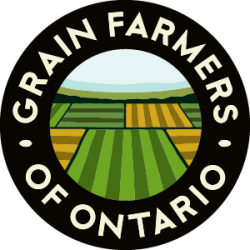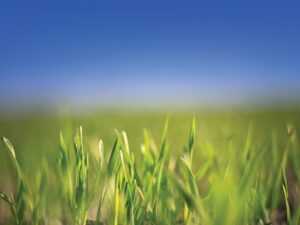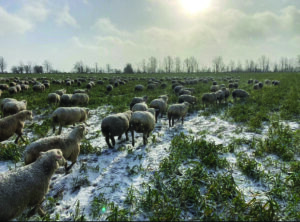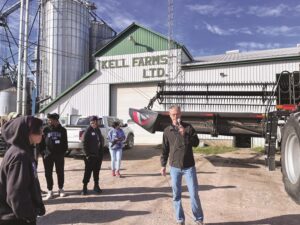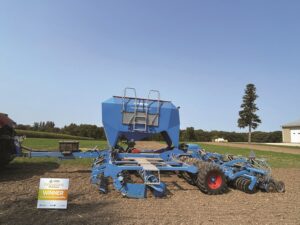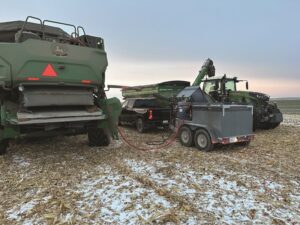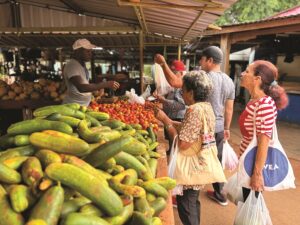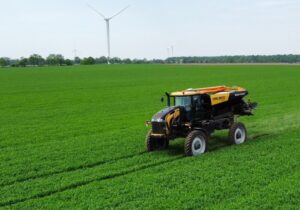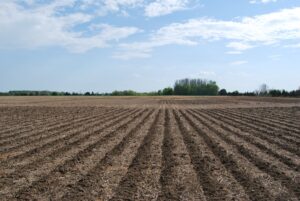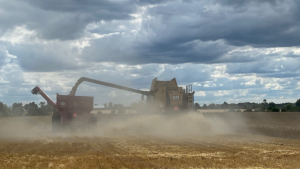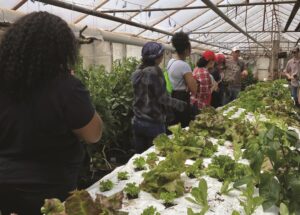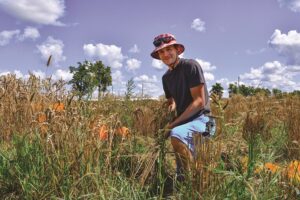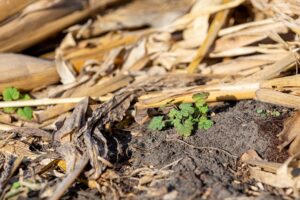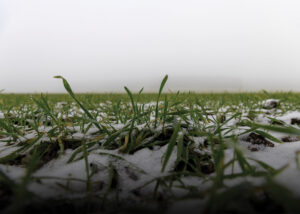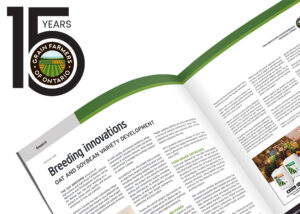Fertilizer rate research
LOTS OF VARIABLES MEANS IT’S NOT AN EASY TASK

Researchers often face what can seem like an uphill battle in a search for a clear direction. For any number of reasons, a project’s outcome may not yield the anticipated results, yet no experiment is ever a complete failure.
It may not provide the answer, but it might be part of a valuable process of elimination that leads to a tangible way forward.
Dr. John Lauzon, associate professor in the School of Environmental Sciences at the University of Guelph, undertook two projects sponsored partly by Grain Farmers of Ontario. The first project, “Safe Fertilizer Rate Guidance for Various Fertilizer Strategies for Strip-Till Corn,” was carried out between late 2021 and November 2023 at three locations (Elora, Paris, and Donegal). Primary among its goals was to answer growers’ questions about strip-till fertilizer rates in corn and establish rate responses to determine injury thresholds.
“Tillage prior to corn traditionally incorporates large amounts of fertilizer to build or replace fertilizer from the crop rotation,” cites the project’s preliminary report. “Strip-till can efficiently incorporate large amounts of fertilizer but creates safety concerns. Growers are currently using trial and error.”
STRIP-TILL FINDINGS
There was the added challenge of conducting fertilizer and strip tillage treatments in the fall before field activity, different fertilizer placement strategies, and different fertilizer blends. Strips couldn’t be tilled in the fall of 2021, so tillage and fertilizer treatments were delayed until spring 2022. Fall tillage and treatments were successfully carried out in the fall of 2022 and 2023, with an interim report generated in November 2023.
Ben Rosser worked closely with Lauzon on the strip-till project and notes the challenge of determining rates at which injury can occur because it’s dependent on soil types and weather conditions. Specific fertilizer blends or placement strategies that should have caused significant damage didn’t occur as expected, or rates or placements that shouldn’t have been an issue showed damage.
“With two years of data, we’re seeing preliminary results at this point,” says Rosser, corn specialist with the Ontario Ministry of Agriculture, Food and Agribusiness (OMAFA). “With fertilizers, we’d be more concerned about urea in the springtime with high rates and we definitely did see burn at our 2024 locations. We were surprised in 2022 just how little burn at some of the higher rates of urea.”
It’s the different types of strip-till that can affect the as opposed to its adoption rate among growers. Is it a 2 x 2 banding or shank-applied? Some growers are placing all of their fertilizer at the bottom of the strip for safety while others want a starter fertilizer effect, so they’ll release fertilizer a couple of inches above the bottom of the shank.
“The key with this project was a custom-built toolbar with four different row units on it for four different fertilizer placements,” says Rosser. “That allows us to investigate some of the most popular options. In our case, that’d be deep banding with a shank, shallow banding with a shank mixing with coulters and then banding on the edge of the strips. I don’t know any commercial machines doing that but some growers in Ontario have built machines with their banding fertilizer on the edge of the strips.”
Crop injury was a key mention in Lauzon’s report, and Rosser concedes that determining the injury potential was an important factor, not as a way of promoting higher rates of fertilizer but to test any thresholds. Another component is understanding the higher level of management that strip-till requires, particularly planning for fall tillage, which is very crop-dependent.
LEARNING MORE ABOUT SULPHUR
The second of Lauzon’s projects, “Timing and Placement on Sulphur on Corn, Soybeans and Wheat,” was conducted during the 2022, 2023, and 2024 growing seasons. Four goals included determining the extent of sulphur response in the three crops, determining the timing and placement of applied sulphur on crop response, evaluating the release timing of plant-available sulphur from elemental sulphur, and further calibrating a sulphur soil test. The work was conducted at Elora with additional sites available from work by Pioneer/Corteva Agriscience, Maizex Seeds, and OMAFA’s soybean specialist, Horst Bohner.
Testing for sulphur response in-field is challenging because it requires correcting for the nitrogen in ammonium sulphate or potassium in potassium sulphate. But in terms of the extent of sulphur response in the three crops and determining the impact of timing and placement of applied sulphur, only two off-station sites showed a response. “At the on-station sites, the preliminary data evaluation has not shown any response to applied sulphur regardless of application timing or placement,” states the project summary.
The summary went to cite the need for the final year’s data to complete a final evaluation.
According to Shawn Brenneman, most growers in Ontario understand sulphur’s role in maximizing yields, and many consider it a macro-nutrient for crops like corn, wheat and canola. What can confound growers’ understanding is the uptake of sulphur in different crops; with wheat or sugar beets, the demand for sulphur is larger in vegetative stages. Corn, soybeans, and potatoes require most of their sulphur from later vegetative through to reproductive stages, so mineralization and release from the soil can have a bigger influence on overall sulphur supply.
“The majority of growers I work with account for sulphur demand somewhere in their crop plan,” says Brenneman, director of commercial growth and strategy for CanGrow Crop Solutions. “This could be through manure, organic amendments, organic matter mineralization, or applied fertilizer sulphur sources. Where we can do more work is in the 4R management of sulphur, better understanding when crops need sulphur, sources and potential risk factors for losses from runoff, erosion, leaching, volatilization, and tie-up with precipitation.”
In certain crops and certain regions of Ontario, applying sulphur is used as a form of insurance, adds Colin Elgie, soil fertility specialist for field crops with OMAFA. He agrees with Brenneman’s approach that the 4R nutrient stewardship approach is best.
“In some cases, we’re probably overapplying it and it’s likely not necessary on every field, every year for that crop,” says Elgie. “It should be looked at specifically as that secondary macro and something that variable-rate application may be a good fit for. If we have a way to identify where that response is going to be in the field and apply it where it’s needed, great -because it’s not something that we can easily build up year after year.”
This project was funded in part by the Ontario Agri-Food Innovation Alliance, a collaboration between the Government of Ontario and the University of Guelph. •

